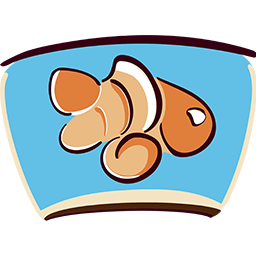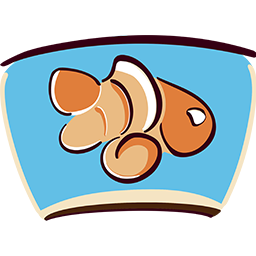What Are The Different Zones When Stocking An Aquarium?
-
Aquariu.ms -
June 27, 2020 at 1:02 PM -
3,511 Views
We highly recommend the usage of AqAdvisor to get the correct stocking levels for your specific setup size, equipment used, and other aspects. Please note that this website does affect a conservative view when calculating the stocking levels and water change levels. This tool will also allow you to be able to see if species require different water parameters, or in some cases, they might be prey and predator in the wild.
Inhabitant Zones
There are three distinct different zones where all inhabitants are classified as they will most likely tend to be visible in these areas. By stocking your aquarium to have all of these zones filled, you can make an aquarium look completely stocked full of active fish when in reality you are still within or below stocking limits. Plus when you have all three zones covered, you will have the various natural effects and benefits that each species has when coexisting with each other. We will go over some of the most common traits that are found within species of each zone, along with many benefits and why they are placed into these zones under their profiles.
Top Zone
The top zone of the aquarium is normally one that will be the most noticeable when someone looks into your aquarium, and for obvious reasons. Without anything moving in the top section, it might seem like most of your inhabitants are hiding, scared, or it may also appear as if your aquarium is not stocked all the way. Decorations might curb this initial thought if they are placed correctly, it still is the first place that many people's eyes glow towards when they first see an aquarium. To tell if a fish belongs in this zone, we can most easily tell by the shape and direction of its mouth. Commonly we will see that they have a mouth that is on the top of their face and it should be shaped upward towards the surface of the water. This is because these fish will eat directly from the surface in the wild, and need to have these adjustments to catch food or prey sitting on the water's surface. Other less common traits found in top zone fish would be the fact that they stay still in the water towards the surface, and sometimes more obviously will only stay in the top zone when viewed in various aquariums. When fish in this zone are sleeping they will tend to drift around the aquarium, however many that need to breathe oxygen with their labyrinth organ will sink at the bottom of the aquarium and periodically swim to the surface to get the oxygen they require.
Middle Zone
The middle zone of the aquarium holds most of the fish species and is most commonly used when stocking an aquarium. Commonly we see that many fish in this zone will have mouths that are directly in the middle of their body which allows them to eat food that is falling or drifting throughout the water column. Many fish species that are within this zone are schooling or shoaling fish that require a moderate population of their species to feel safe, and will mostly roam around the middle of the aquarium playing with other inhabitants. There are very few invertebrates that can be classified within this zone as they tend to always stay towards the bottom zone compared to the majority of the fish species that are classified within this zone. When fish of this zone are sleeping they will tend to stay floating (or hovering) in the same position the whole night although in some cases they will drift with the water current around the tank carelessly.
Bottom Zone
The bottom zone of the aquarium is normally one that will contain most, if not all, invertebrates and mostly bottom-feeding fish. This zone is mostly forgotten since decorations cover most of the bottom's surface and also that many aquarium owners do not see the direct benefit of having a cleaning crew for your aquarium. Commonly we see that many fish in this zone will have a mouth that is on the bottom of their body, can look like around mouth, and the fish may have a color that looks like camouflage to hide it from other inhabitants. For invertebrates most commonly they will be classified into this zone as without any decoration or walls they would only have this zone as many cannot swim, and if they can swim it is only for a short period. Most of the inhabitants of this zone will feed off of the excess food that is placed into the aquarium during feeding time(s), any algae that may be on the walls of the aquarium or decorations, and some if not all will feed off of any dead inhabit that is resting on the bottom.
Quarantine Inhabitants
Quarantine tanks are a high piece of aquarium pre-care that many do not simply know about or think as being unimportant until they face some of the negative consequences. Whenever a new inhabitant is transported from the breeder's location to the aquarium shop, and then finally to your aquarium they go through a ton of stress which lowers their immune system. A lower immune system will allow for parasites, diseases, or any other negative aspect to manifest itself within and not show any visible signs until they are highly stressed again. Thus, making sure that the inhabitant is in perfect health before adding it to your main aquarium is essential, since a simple disease or parasite can wipe out a whole aquarium within a matter of days to weeks. The most common and suggested time frame to keep an inhabitant in the quarantine tank would be anywhere from 2-4 weeks since most parasites and diseases will show their symptoms within this time.
The whole range of benefits is huge, however, the most is making sure that you will have a healthy and happy inhabitant to add to the stocking in your aquarium. If you do notice that an inhabitant is acting sick, you can safely treat them with the correct medicine faster than you would be able to do in your main aquarium. This can be another benefit since you can make your quarantine tank act as a small hospital tank if some tank mates start to get sick, and it isn't affecting any other species in the aquarium. Another added benefit is the fact that you can slowly adjust a new fish or invertebrate to eat a specific type of food that they might not be so accustomed to without the hassle of other tank mates eating it before they try it.
A good size for a quarantine tank can be anywhere from a 10-gallon (37.85 liters) upwards to a 40-gallon tank (151.41 liters) depending on the possible stock you are wishing to keep. The same equipment as a normal aquarium can be used for quarantine tanks, however, the most used item would be sponge filters compared to other filters. This is because they are highly inexpensive and if a disease does wipe out the whole quarantine tank, then it can be simple and easy to replace the whole unit. Many aquarium owners do not use a substrate in their quarantine tank, however, this can make the fish disoriented at times.

